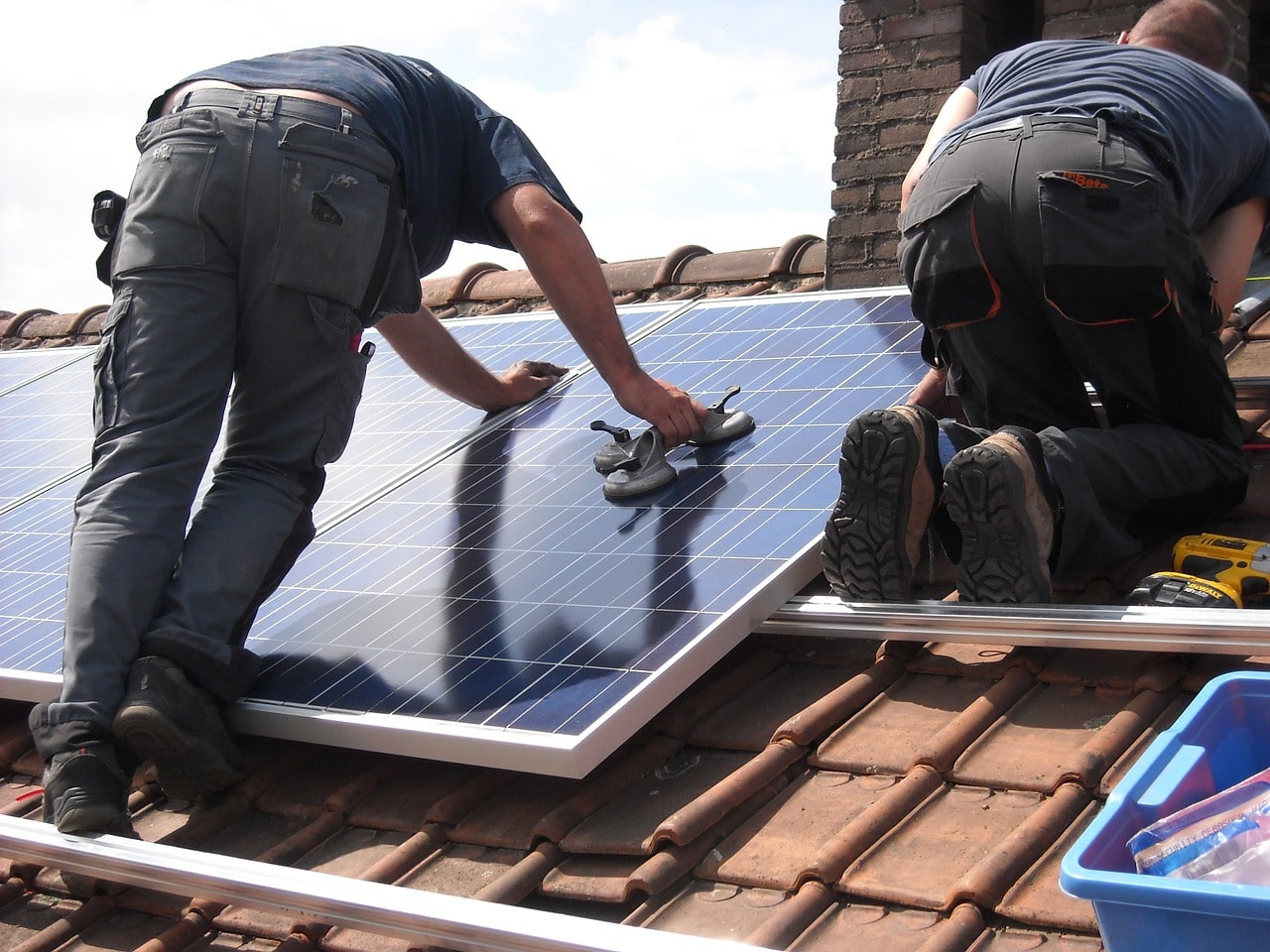Sustainable roofing options have become increasingly important in today’s environmentally conscious world.
In the pursuit of reducing carbon footprints and lessening the impact on the planet, both individuals and businesses have redirected their focus toward innovative and environmentally friendly roofing solutions.
Various options are available, ranging from solar panels that harness renewable energy to green roofs that offer insulation and enhance air quality.
Furthermore, cool roofs, which reflect sunlight and lower energy consumption, and recycled roofing materials, which repurpose waste, have gained popularity.
These options contribute to a greener future and offer numerous benefits for both individuals and the environment.
As established roofing contractors, we’ve outlined the advantages of each environmentally-friendly roofing option discussed in the article to help you choose the most suitable one for your requirements.
Solar Panels
Solar panels are a sustainable and efficient solution for harnessing renewable energy from the sun. The efficiency of solar panels pertains to their capability to convert sunlight into usable electricity.
Panels with higher efficiency can produce more power from the same sunlight, making them a popular choice for homeowners and businesses seeking to maximize energy production.
Additionally, solar panel installation plays a crucial role in ensuring optimal performance. Proper placement and orientation of the panels are essential to capture maximum sunlight throughout the day.
Moreover, a professional installation ensures the panels are securely mounted and connected to the electrical system, minimizing the risk of damage and maximizing their lifespan.
To sum up, opting for high-efficiency solar panels and professional installation can significantly enhance the energy output and lifespan of a solar power system.
Green Roofs
With solar panels being a popular choice for harnessing renewable energy, the discussion now turns to another sustainable roofing option: green roofs. Green roofs, alternatively referred to as living roofs or vegetated roofs, are systems in which plants are cultivated on the rooftop. The benefits of green roofs are numerous.
They provide insulation, reducing energy consumption and lowering heating and cooling costs.
Furthermore, green roofs improve air quality by absorbing pollutants and carbon dioxide while simultaneously releasing oxygen. They reduce stormwater runoff, acting as natural water filters and preventing flooding.
Additionally, green roofs create wildlife habitats and enhance buildings’ aesthetic appeal. The installation involves several steps, including waterproofing the roof, adding a drainage layer, and adding soil and plants.
Careful consideration is given to the weight-bearing capacity of the structure to ensure its stability. Green roofs stand as a sustainable roofing choice with numerous advantages, demanding a meticulous and detailed installation process.
Cool Roofs
Cool roofs serve as a sustainable roofing option, aiding in the reduction of energy consumption and lowering cooling costs.
These roofs are engineered to reflect more sunlight and absorb less heat, effectively maintaining the building at a cooler temperature and diminishing the reliance on air conditioning.
The benefits of cool roofs include energy savings, improved indoor comfort, and extended roof lifespan.
Cool roofs demonstrate an effective ability to lower the roof surface temperature by as much as 50 degrees Fahrenheit. This substantial temperature reduction results in significant energy savings, particularly in terms of cooling requirements.
According to studies, cool roofs can save up to 15% of cooling energy consumption in buildings.
Moreover, cool roofs play a crucial role in alleviating the urban heat island effect by minimizing the heat absorbed and emitted by buildings, leading to cooler cities and enhanced air quality.
Overall, cool roofs are a cost-effective and environmentally friendly solution for reducing energy consumption and promoting sustainability.
Recycled Roofing Materials
Recycled roofing materials offer an environmentally conscious alternative to traditional roofing options, aligning with the sustainable principles discussed in the previous subtopic. Using reclaimed materials in roofing can achieve several benefits.
At the outset, it contributes to decreasing the demand for new raw materials, conserving natural resources, and minimizing the necessity for extraction processes that can be detrimental to the environment.
Secondly, using recycled materials diverts waste from landfills, promoting a circular economy and reducing the carbon footprint associated with waste disposal.
In terms of environmental impact, the utilization of recycled roofing materials can aid in reducing greenhouse gas emissions by avoiding the energy-intensive production processes required for new materials.
Furthermore, the use of reclaimed materials can help alleviate the environmental harm caused by mining and extraction activities, which often lead to habitat destruction and water pollution.
Conclusion
In conclusion, sustainable roofing options play a pivotal role in addressing environmental concerns, reducing energy consumption, and promoting long-term resilience.
As individuals and businesses increasingly prioritize eco-friendly practices, the adoption of sustainable roofing options emerges as a crucial step toward a more environmentally conscious and resilient future.
